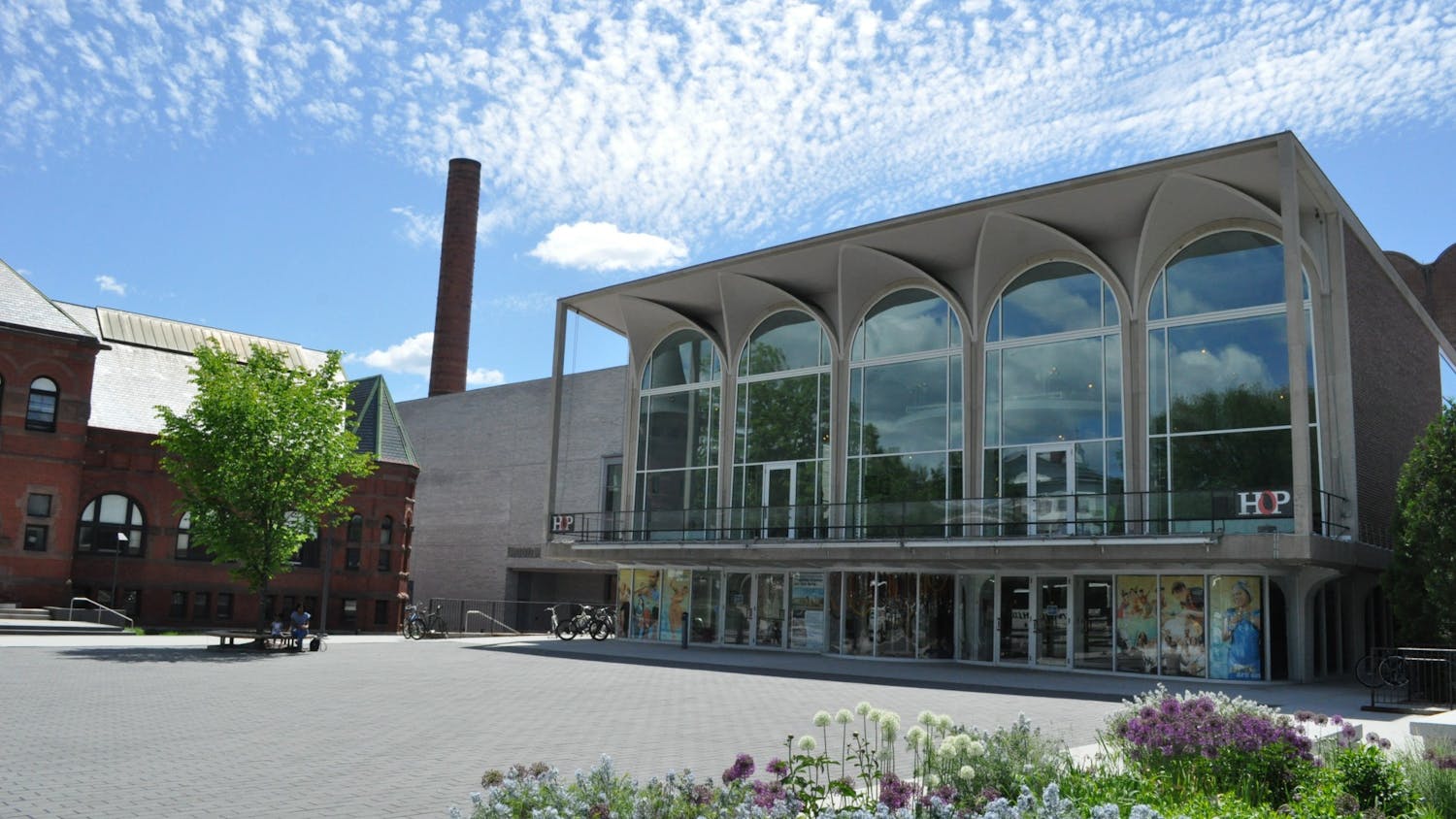Mateo Romero '89 photographed 10 Native American Dartmouth students and alums dancing in their tribal regalia at the College's annual Pow-Wow in 2009. He then enlarged the images and painted over them in bold acrylic brushstrokes. The result, "The Dartmouth Pow-Wow Suite," is a colorful series of portraits that capture the vibrancy of the dance, currently on display in the Hood Museum of Art.
Kayla Gebeck '12, a Red Lake Anishinaabe and current co-president of Native Americans at Dartmouth, is the subject of one of the portraits.
Other students are portrayed more solemnly in Romero's portraits, but Gebeck's happiness is evident from the canvas.
"In mine, I'm laughing and having a good time," she said. "Dancing comes from healing ceremonies. It needs to be respected, the history and tradition needs to be remembered. But it's fun, you feel good after, you get in the zone."
Romero himself is a Cochiti Pueblo and he explains in his artistic statement, "In many Native American communities, dance holds a powerful central place in the structure of the worldview. Dances are, at different times, social, amorous, honoring, ceremonial, spiritual."
Romero applied a tar glaze over his finished products to accentuate the vibrant atmosphere of a pow-wow.
"The end result is a collision between photographic portraiture and abstract expressionist paint handling," Romero said in his statement.
Romero explained that it is a custom for the Tewa Pueblo dancers in Northern New Mexico to say "we dance for life" when they enter a relative's house.
"It is in this spirit I offer these paintings to the audience," Romero said in the statement. "My hope is that the works transcend the limits of ethnic culture and address the audience on a human level."
Gebeck explained that while pow-wows vary stylistically between communities, they share the same basic definition as intertribal events that involve "coming together to dance, sing, have a good time and keep the culture going."
The annual Dartmouth Pow-Wow is smaller than others in the Midwest because there is a smaller concentration of tribes in the Northeast. Even so, it is the largest student pow-wow in the Ivy League, Gebeck said.
"You get to meet people from all over," she said. "When you're at a pow-wow, there's always someone to laugh with."
Dancing while wearing heavy regalia is physically strenuous, and the design of the regalia itself is as much of an artform as Romero's portraits. The symbolism in each piece of clothing is tribe-specific, with geometric designs more common among certain tribes and contemporary, flashy colors more prevalent in others. Gebeck explained that her tribe's regalia contains lots of black velvet.
All of the regalia is handmade and the process is often painstaking the beading is typically accomplished by stringing just three beads at a time. Every piece of regalia worn during a dance is either made by the person wearing it, or by a member of his or her family, Gebeck said.
"The beadwork is something I've grown up around and never thought twice about," she said. "But it's really a form of art, a beautiful process. [Romero's] paintings caused me to learn more about what I constitute as Indian art."
Gebeck added that Romero's paintings capture the essence of the dance and how the dancers see themselves.
"I'm honored to be painted," she said. "I just don't want people who don't have awareness about the dance to think that [the moment in the painting is] all that is. It's always changing and evolving."
Romero will deliver a talk about his exhibit in Loew Auditorium on Oct. 8 at 8 p.m.




